E-Commerce: overview of the online commerce industry in IT
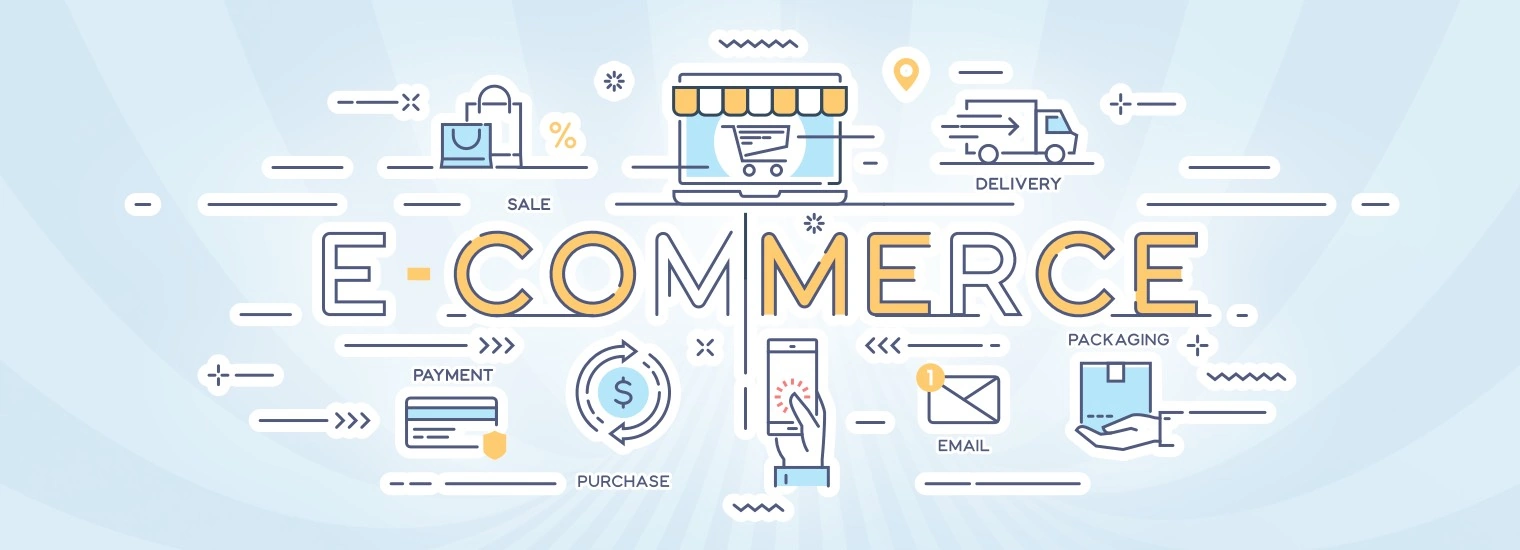
Introduction to E-Commerce

What is E-Commerce?

E-commerce (electronic commerce) - combines platforms and services where payment occurs online. First of all, online stores that accept electronic payments.
By this term, we often imagine online stores where you can pay for your purchase online. But in fact, there is much more to it than just online payments.
E-commerce is a universe of global business processes that include not only the purchase and sale of goods via the Internet. This also includes mobile commerce, electronic fund transfers, logistics and supply management, online marketing, online transaction processing, electronic data interchange (EDI), and even automated information collection systems.
So when you think about e-commerce, think not only about the latest purchase from an online store but also about the infrastructure that stands behind that process.
History of e-commerce development
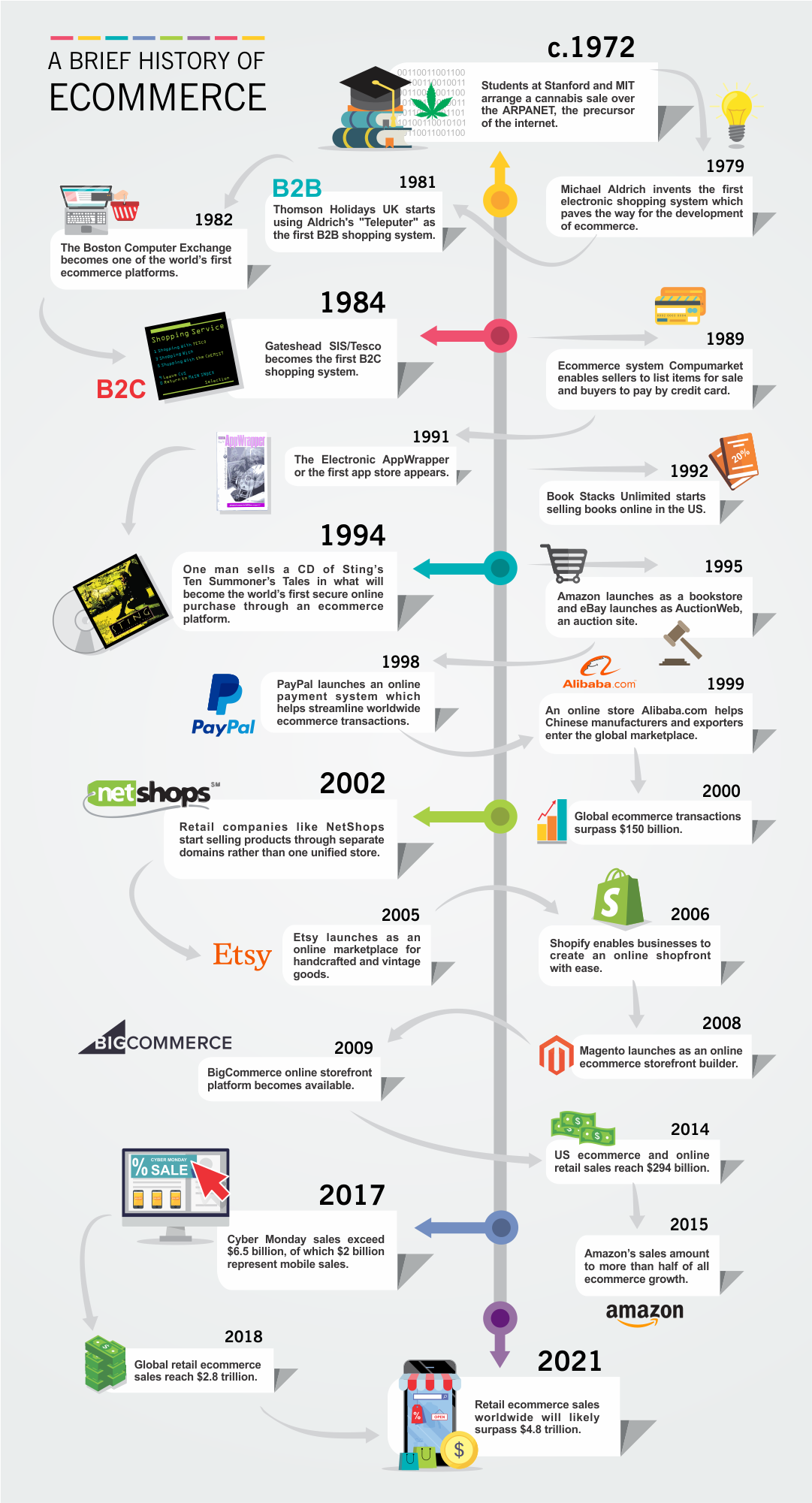
Classification of e-commerce
E-commerce can be classified according to two criteria:
What is Sold
- Physical Goods: Products, clothing, furniture, electronics, paper books.
- Digital Goods: Music, movies and TV series, e-books, online courses.
- Services: Photography, cleaning, repair, moving assistance, etc.
Who it is Sold to
- B2C (Business to Consumer): Online stores that sell goods or services directly to consumers.
- B2B (Business to Business): A company sells goods to other companies. This can be wholesale trade or goods and services intended for corporate needs, such as cash register equipment, cloud storage and services, and international cargo delivery.
- C2B (Consumer to Business): Customers (individuals) offer goods and services to companies. For example, freelancers: designers, programmers, content creators.
- C2C (Consumer to Consumer): People sell goods and services directly to each other: nannies, tutors, confectioners, and clothing designers.
- G2B (Government to Business): Government bodies supply something to businesses, such as the use of radio frequencies, airspace, data collection, and processing services.
- B2G (Business to Government): The reverse process, such as goods and services within government procurement, software, and electronics.
- C2G (Consumer to Government): When consumers pay for various government services.
The two most common types are B2C and B2B.
Market globalization

Online trading blurs geographical boundaries, allowing companies and buyers from different parts of the world to interact directly. This opens up new markets for sellers and gives buyers access to goods from anywhere in the world.
In this article, we will dive into the key aspects of the e-commerce industry, looking at the main technological tools, key players, development features, and future trends.
Glossary of Terms
- E-commerce Platform: An online system that allows sellers to create web stores, list products, and manage sales.
- Social Commerce: The sale of goods and services directly through social media platforms.
- Dropshipping: A sales model where the seller does not keep goods in stock but instead transfers orders to a supplier who ships them directly to the customer.
- Omnichannel: The integration and coordination of various sales and communication channels, including online stores, physical stores, mobile apps, and social media.
- Personalization: The use of customer data to provide individualized offers, recommendations, and marketing messages.
- Conversion: The process of turning a website visitor into a buyer, as well as the corresponding measure of the effectiveness of this process.
- Marketplace: An online platform where multiple sellers can offer their goods or services in one place.
- Supply Chain Management: The optimization of processes for ordering, storing, packaging, and delivering goods to ensure efficiency and customer satisfaction.
Key technologies and tools in E-Commerce

E-commerce platforms
Shopify

- Description: One of the leaders in the e-commerce industry, Shopify offers a convenient solution for starting online trading without the need for coding knowledge.
- Integration: There are APIs and SDKs for PHP, Ruby, Python, .NET, Java
- Features: Easy to use, many paid and free themes, extensive App Store.
Magento

- Description: Flexible and scalable platform, popular among medium and large enterprises.
- Integration: RESTful API, PHP, Javascript available
- Features: Flexibility, scalability, large developer community.
WooCommerce

- Description: An e-commerce plugin for WordPress that turns your website into a full-fledged online store.
- Integration: CLI and REST API available
- Features: WordPress integration, flexibility, wide selection of plugins.
PrestaShop
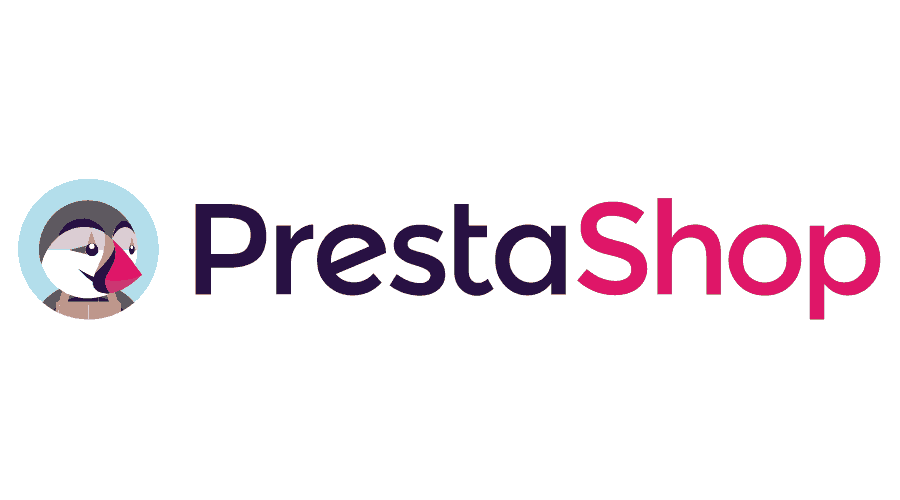
Description: An open e-commerce platform with a large number of functions and modules.
Integration: PHP, REST API
Features: Flexible module system, large community, many topics.
BigCommerce

- Description: An open e-commerce platform with a large number of functions and modules.
- Integration: PHP, REST API
- Features: Flexible module system, large community, many topics.
OpenCart
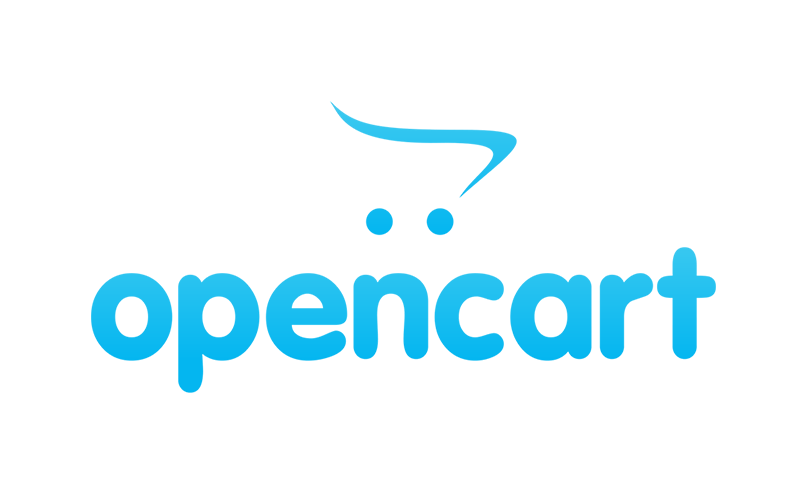
- Description: A simple and lightweight solution for creating an online store.
- Integration: Web API, PHP
- Features: Open source, many extensions, easy to install.
Wix eCommerce

- Description: Platform for creating websites with the ability to add e-commerce functionality.
- Integration: API, JavaScript SDK
- Features: Easy to use, drag-n-drop editor, a wide selection of templates.
Squarespace

- Description: Platform for creating websites with integrated e-commerce tools.
- Integration: REST API, JavaScript,
- Features: Elegant templates, integration with social networks, simple interface.
Weebly

- Description: Intuitive website builder with support for e-commerce module.
- Integration: API
- Features: Easy to use, many plugins, responsive templates.
3dcart
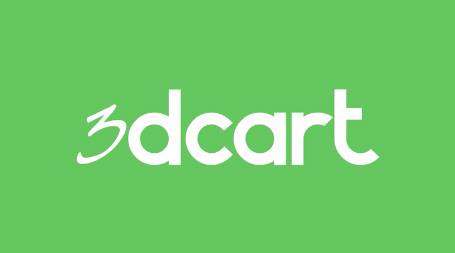
- Description: Cloud e-commerce platform offering many functions for online trading.
- Integration: There is no such thing, you can manage HTML templates
- Features: Support for multiple payment gateways, SEO-optimized templates, and integration with social networks.
Payment system integrations

We have already reviewed fintech here.
For E-commerce, the most popular are:
- PayPal: One of the most popular and reliable methods of online transactions. Offers fast transfers, and protection for buyers and sellers.
- Stripe: The service provides tools for accepting online payments.
CRM-systems

- Salesforce: A cloud-based solution that allows companies to effectively manage customer relationships, optimize sales, and analyze data.
- HubSpot: In addition to CRM features, HubSpot also offers tools for marketing automation and social media management.
Analytics and monitoring
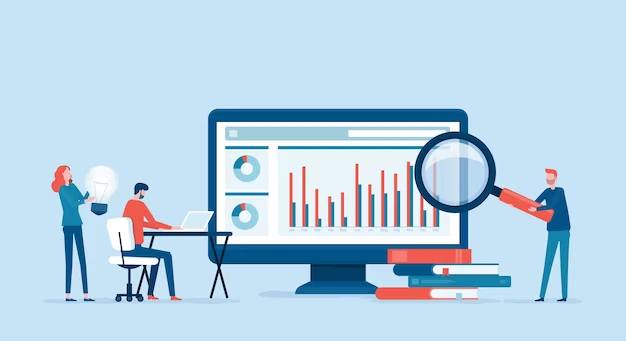
Kissmetrics

Description: A web analytics tool that allows you to study user behavior on the site, track the sales funnel, and optimize the purchasing process.
Features: Audience segmentation, real-time reporting, behavioral analysis.
Optimizely

- Description: A/B testing platform that allows you to optimize your website to increase conversion.
- Features: Simple interface, integration with many e-commerce platforms, detailed testing statistics.
Google Analytics

- Description: The most popular website analytics tool that provides detailed information about visitors, traffic sources, advertising campaign effectiveness, and much more.
- Features: Deep data segmentation, integration with other Google products, creation of custom reports.
Hotjar

- Description: A tool for visualizing the behavior of visitors on a website using heat maps, session recordings, and surveys.
- Features: Analysis of user activity on the site, creation of surveys and feedback forms, analysis of heat maps.
Crazy Egg

- Description: Platform for visual analysis of user activity on the site.
- Features: Heat maps, viewing scrolling activity, A/B testing tools.
Mixpanel

- Description: Product analytics platform that provides detailed data on user behavior and conversions.
- Features: User segmentation, product interaction tracking, automated reports.
Logistics and warehouse management

- DHL: International logistics company offering solutions for shipping goods around the world.
- FedEx: Another large logistics company with a global infrastructure and a wide range of services.
AR and VR technologies
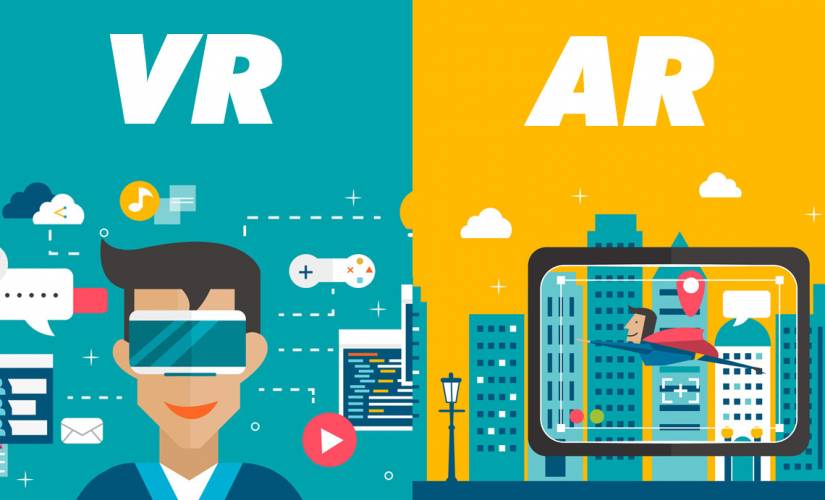
Virtual fitting rooms, where customers can “try on” clothes or shoes without even being in the store, are becoming increasingly popular. Some apps allow you to “place” furniture in your home before you buy it, thanks to augmented reality technology.
Such technologies and tools help modern online stores not only survive but also thrive in a highly competitive environment.
Key players and products in E-Commerce
Amazon
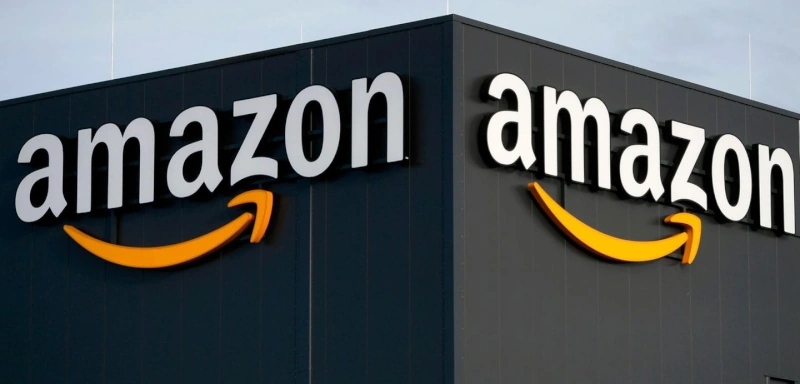
Amazon, founded in 1994 by Jeff Bezos, has grown into the world's largest retailer, offering products in various categories as well as many other services, including streaming media and cloud solutions.
Alibaba
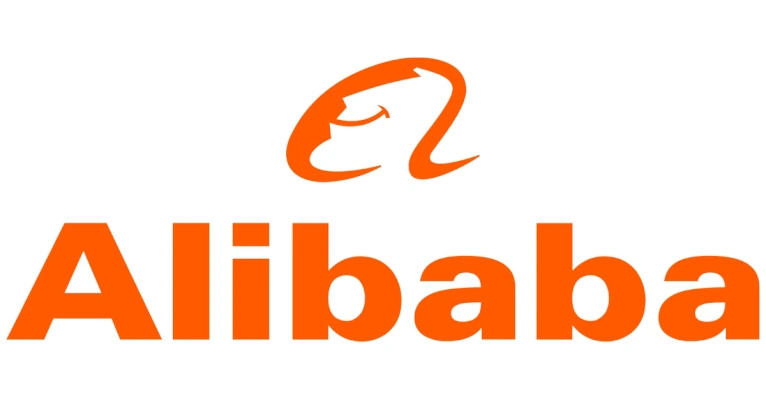
The largest trading platform in China, founded by Jack Ma. Alibaba offers wholesale, retail, electronic payments and many other services.
eBay

One of the first online auctions, founded in 1995. eBay provides a platform for buying and selling products from individuals to large companies.
Walmart Online
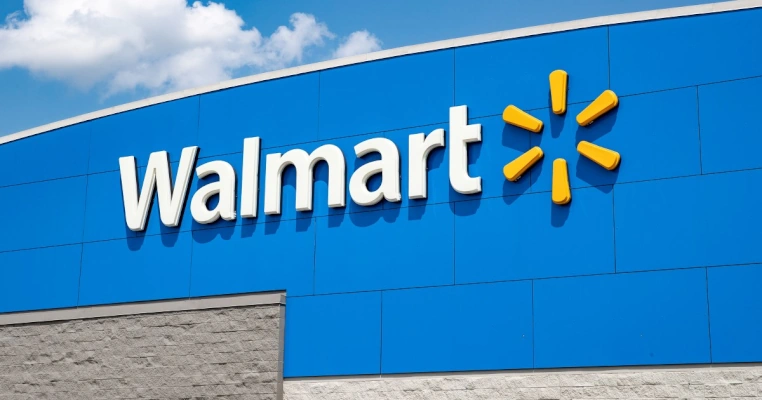
The digital direction of Walmart, one of the largest retailers in the world.
JD.com

A huge online trading platform in China, providing products of various categories and actively investing in new technologies.
ASOS
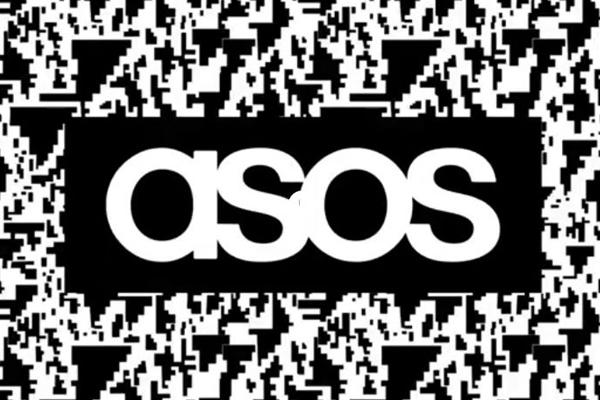
British fashion retailer active online and offering a wide range of brands.
Etsy

A unique platform for buying and selling handmade, vintage and craft goods. It's a place where creators can sell their creations directly to customers.
Zalando

European online store of fashionable clothes, shoes and accessories.
Rakuten

A Japanese company that provides a variety of online services, including a marketplace, electronic payments and many others.
Features of domain development in E-Commerce

1. Complexity of integration
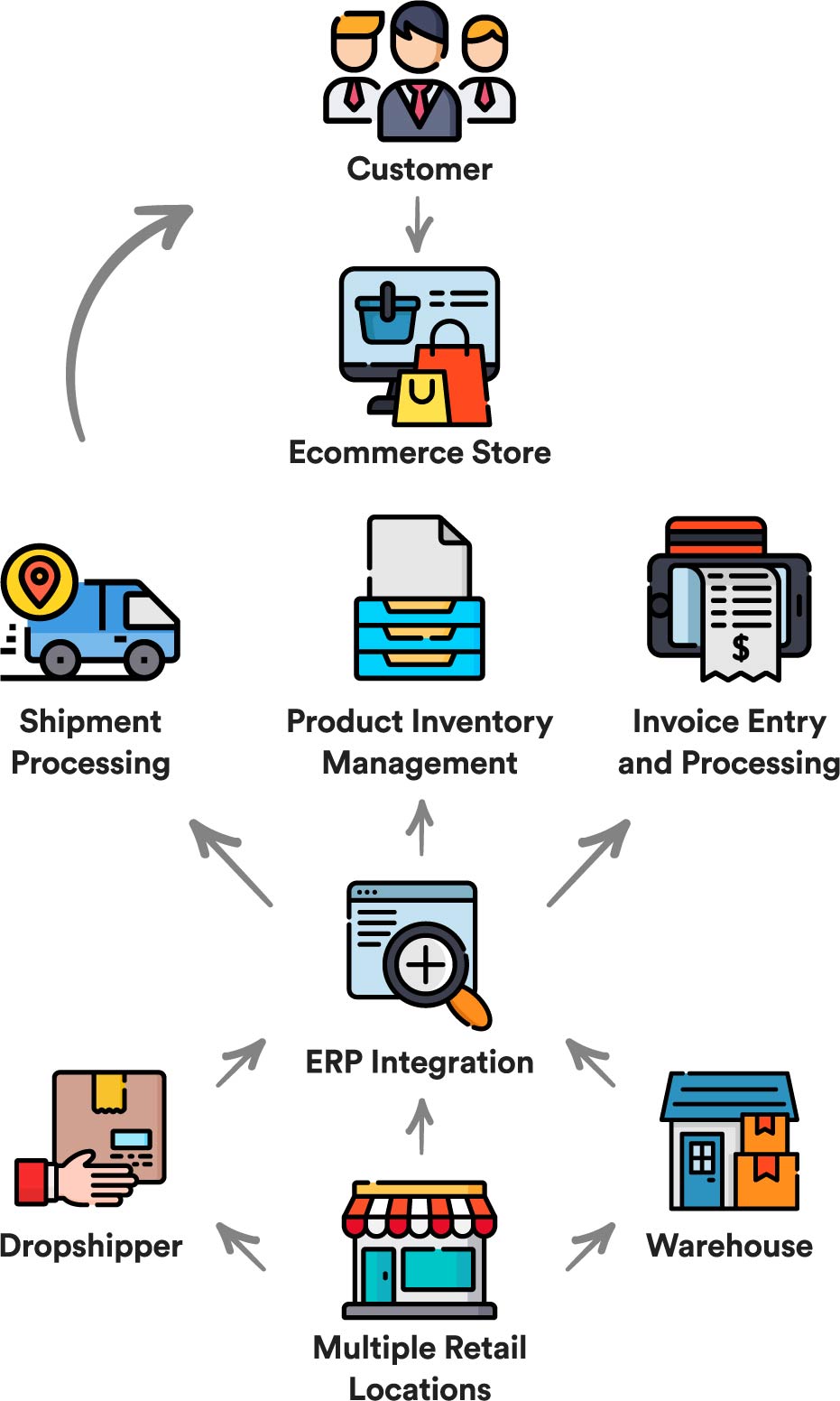
Development for e-commerce includes not only creating a store interface but also connecting to various external systems and services. This may include integration with CRM systems, inventory systems, logistics partners and payment gateways. This imposes additional development requirements as different APIs, data standards, and security protocols must be taken into account. And don’t forget that integration can be not only at the program code level. Sometimes these are also complex business processes that need to be carefully thought through.
2. Performance optimization

Visitors to online stores expect instant responses and fast-loading pages. A delay of just a few seconds can turn off a potential buyer. Optimizing images, caching, and using modern technologies such as PWA (Progressive Web Apps) can significantly improve performance.
3. Adaptation for mobile devices

With the increasing number of purchases from mobile devices, the importance of mobile optimization grows. This includes responsive design, touchscreen-friendliness, and performance optimization for the mobile web.
4. Security
Everything is simple here: where there is money and user data, there are hackers. Therefore, security in e-commerce is not just a requirement, but something that needs to be pumped to the maximum. We are talking about data encryption, two-factor authentication, regular security audits, and so on.
5. UX/UI дизайн

UX/UI in e-commerce serves not only aesthetics but also functionality. A user-friendly interface, clear navigation, high-quality images and clear CTAs (calls to action) help increase conversion. For example, there is a case on the Stripe blog about how page checkout optimization helped E-commerce in America significantly increase conversion
6. SEO optimization
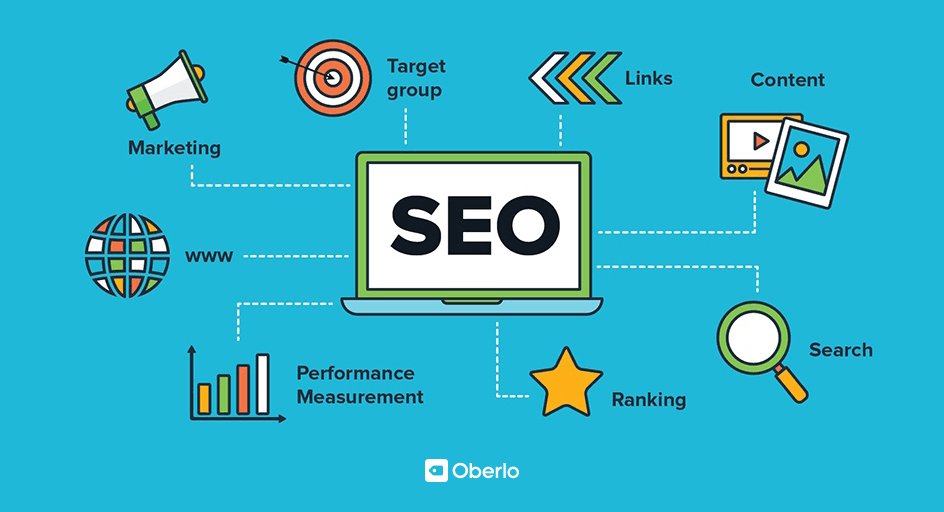
Search engine promotion in e-commerce requires a special approach. The structure of the site, optimization of metadata, work with reviews and the presence of unique content affect positions in search engines.
7. Scalability

As sales and traffic increase, the platform must be prepared for increased load. This includes choosing the right hosting, optimizing your database, and being able to scale horizontally.
8. Multimedia content

Modern technologies such as 3D modeling or augmented reality allow customers to better understand a product before purchasing. This can increase trust and reduce returns.
9. Globalization

Entering international markets presents its challenge. Multilingualism, multi-currency support, cultural sensitivity, and localized marketing campaigns are key to global expansion.
Trends and future in E-Commerce

Since the advent of the first online stores, the e-commerce industry has constantly evolved, adapting to new technologies, consumer behavior and global trends. Here are a few key trends that are likely to shape the future of online commerce:
1. Augmented reality (AR)
Augmented reality in e-commerce is becoming a real breakthrough, especially in areas where the perception of a product “live” is important.
Application in consumer clothing and global trends. Here are a few key trends that are likely to shape the future of online commerce:

Shoppers can “try on” clothing or accessories without leaving their homes. This reduces returns and increases purchasing confidence.
Furniture and interior
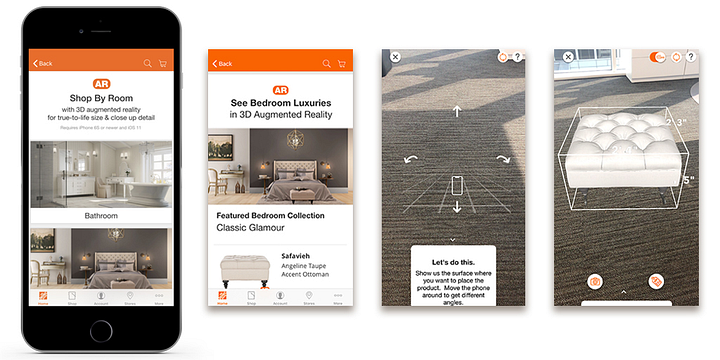
AR allows customers to “place” pieces of furniture virtually in their homes to see how they would look in the interior.
2. Shopping through voice assistants

With the growing use of voice assistants, shopping is becoming even more convenient.
- Quick access: Users can simply say what they want to buy, and their voice assistant will immediately redirect them to purchase.
- Integration: Brands are actively integrating their systems with platforms such as Alexa or Google Assistant to make the purchasing process as easy as possible.
3. Artificial intelligence and personalization

- Recommendations: Based on the analysis of user behavior, AI can suggest products that are most likely to interest the customer.
- Dynamic Content: Websites can adapt to each user, offering promotions, and products, or even changing the design depending on preferences.
4. Seamless integration between online and offline
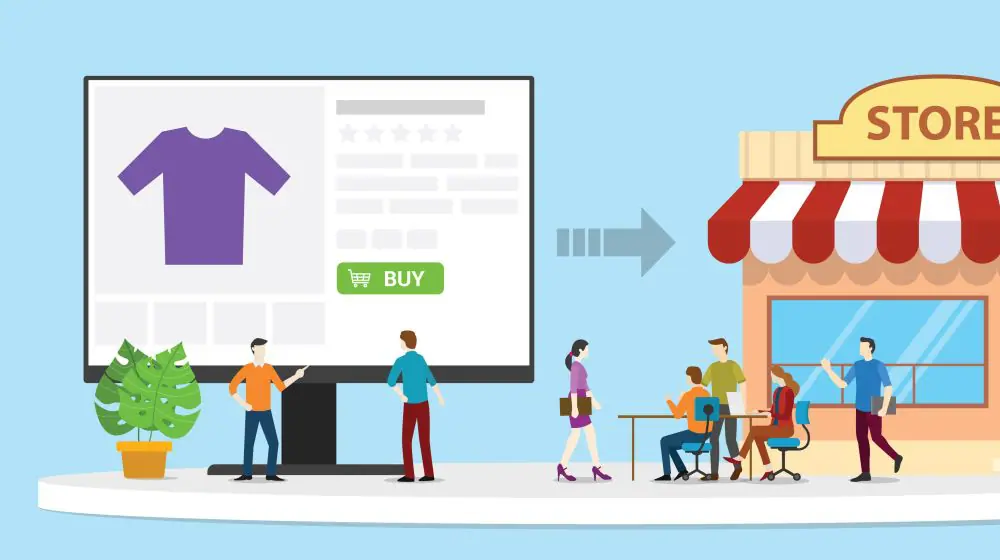
Online and offline trading are increasingly becoming complementary.
- Pickup: Customers can order the product online and pick it up at their nearest store.
- QR codes and NFC: Help connect the physical world with the virtual world by providing additional information or special offers via a smartphone.
5. Dropshipping and Direct-to-consumer (D2C) model
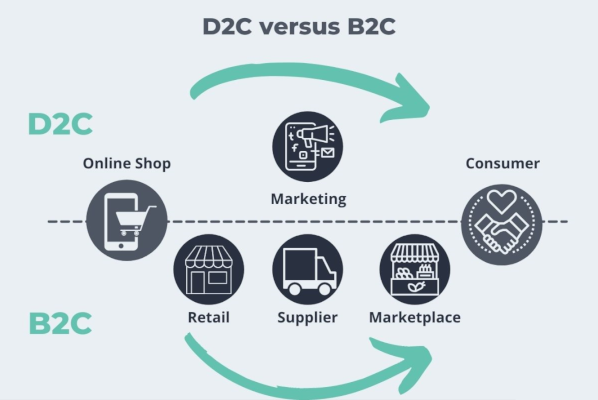
- Direct Selling: Brands can sell their products directly to consumers without going through middlemen, often allowing them to offer better prices.
- Flexible logistics: Dropshipping allows stores not to store goods in a warehouse, but to send them directly from the manufacturer to the buyer.
6. Fintech integration
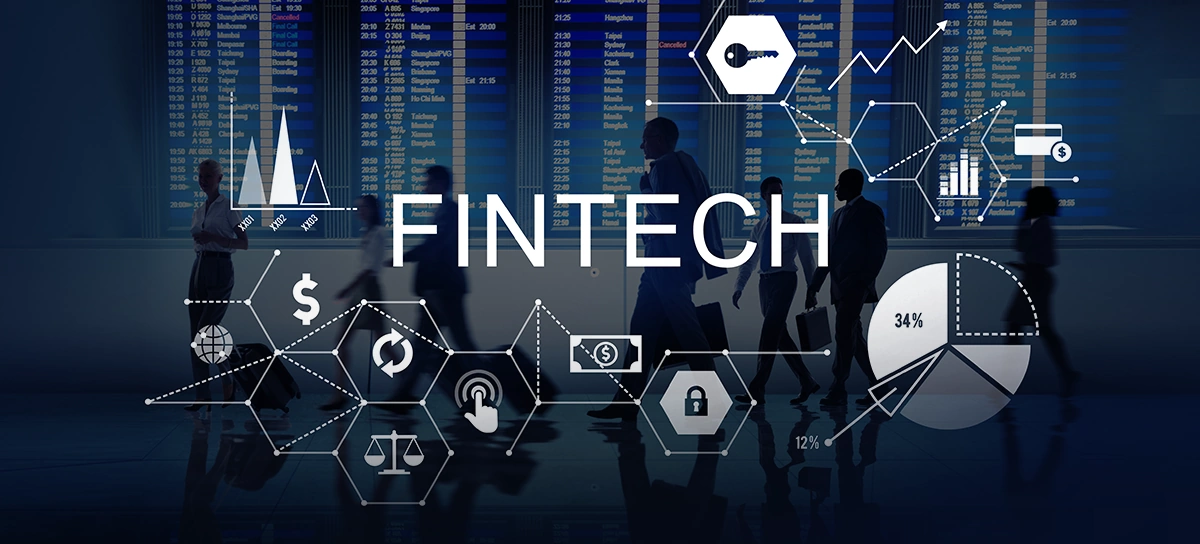
- Alternative payment methods: Possibility of paying with cryptocurrency or purchasing in installments without interest.
- Fast payments: Technologies that allow you to make instant payments without the need to enter card details.
7. Social networks as platforms for sales
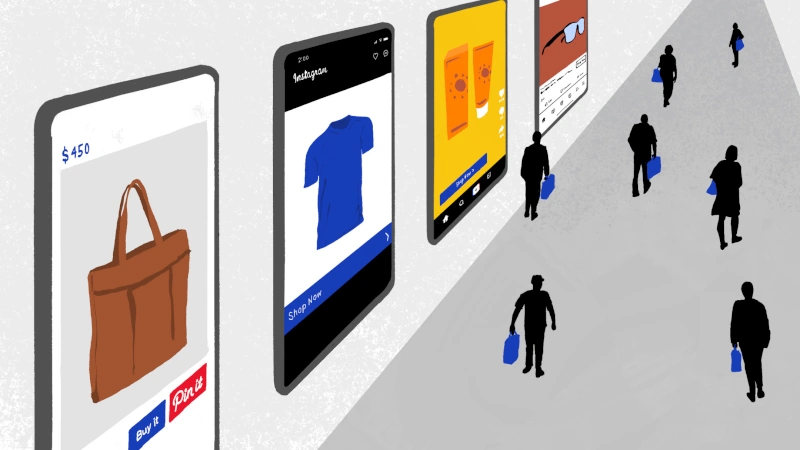
- Shopping through social networks: The ability to purchase goods directly from a post or advertisement on Instagram, Facebook, and other social networks.
- Integration with messengers: Sales support and consultations through popular messengers.
Conclusion

E-commerce continues to grow, blurring the boundaries between the real and virtual world. Innovations in technology such as AR, artificial intelligence, and voice shopping are changing traditional shopping patterns and providing customers with new ways to interact with brands.
As technology advances, customers expect a more personalized experience, a faster and more convenient purchasing process, and integration between online and offline channels. Brands that pay attention to these requirements and adapt to new trends gain a competitive advantage in the market.
The e-commerce industry is in constant development, and new interesting technologies, tools, and approaches await us. Those who are ready to learn, adapt, and move with the times will remain in the market.
